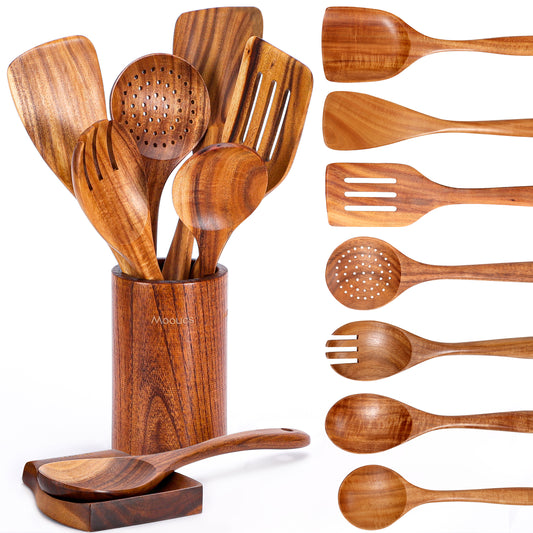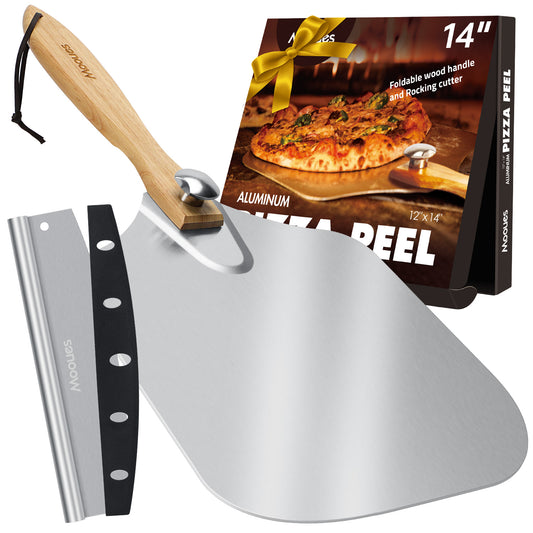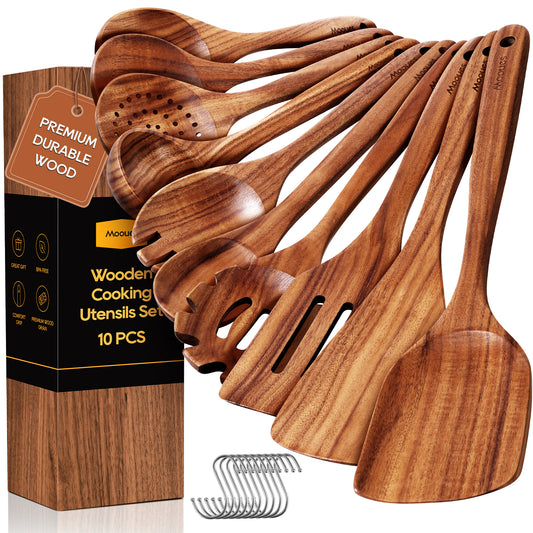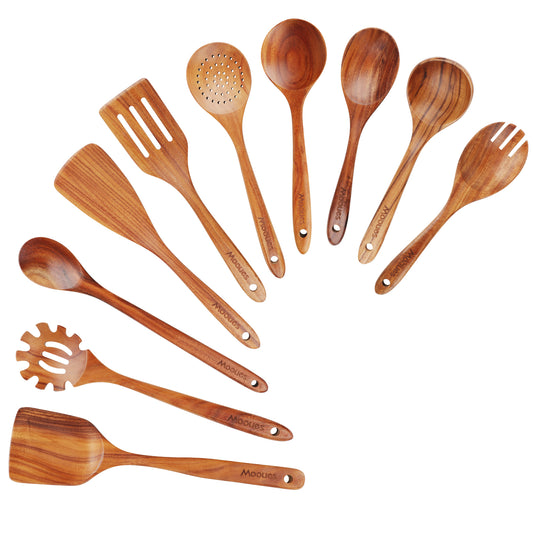Which Foods Are Best Served with Wooden Utensils? A Complete Guide
In the kitchen, the material of your spoon may seem trivial, but it can actually affect the flavor and quality of your food. Whether it’s honey, hot soups, or fermented dishes, some foods are best handled with a wooden spoon. This guide will explore which foods are ideal for wooden utensils and compare them with metal and plastic spoons.
Why Wooden Spoons Are Trusted in the Kitchen
Wooden spoons have a long history, not just because of tradition, but due to several key advantages:
- Non-reactive: They don’t react with acidic foods.
- Heat-resistant: They don’t conduct heat, so stirring hot soups won’t burn your hand.
- Gentle on cookware: They won’t scratch non-stick or ceramic surfaces.
- Flavor-preserving: They don’t impart metallic or synthetic tastes into your food.
This makes wooden spoons the ideal choice for daily cooking, especially for sensitive foods like honey. For more details, check our related blog post.
1. Honey – The Classic Example

Have you ever wondered “Does a metal spoon affect honey?” The answer is yes, at least in subtle ways. Metal can react with honey’s natural acidity, potentially altering its flavor and reducing beneficial enzymes.
Using a wooden honey dipper or ladle keeps the honey pure, preserves its enzymes, and avoids any metallic taste. For honey enthusiasts, wooden utensils are truly the best spoon for honey. You can find a great option here: Mooues 10-Piece Natural Teak Wooden Cooking Utensils Set.
2. Hot Soups, Stews, and Broths

When cooking soups or stews, metal spoons heat up quickly and can burn your hand. Wooden utensils stay cool while stirring hot liquids.
They’re also gentle on non-stick cookware, preventing scratches and prolonging the life of your pots. For stirring soups, we recommend Mooues 3-Piece Wooden Soup Ladle Set.
3. Fermented Foods and Cultured Dishes
Fermented foods like sauerkraut, kimchi, and sourdough starters contain beneficial bacteria and acidic environments. Using reactive metal utensils may interfere with the fermentation or subtly affect the flavor.
Natural wooden kitchen tools maintain microbial balance, ensuring consistent and authentic fermentation. For home fermentation, wooden spoons are the safest choice.
4. Baking and Delicate Desserts
For mixing batters, creams, or custards, a wooden ladle or spoon provides gentle control without overmixing. Unlike plastic, which can warp under heat, or metal, which is harsh, wooden spoons are perfect for cakes, cookies, and whipped creams.
5. Everyday Cooking and Serving
Beyond specialized uses, wooden utensils excel in daily cooking. They offer:
- Comfort and ergonomic handling
- Safety for non-stick cookware
- Long-lasting durability with proper care
Many home chefs keep a set of wooden utensils for cooking, baking, and serving honey.
Wooden Spoons vs. Metal vs. Plastic
| Utensil Type | Pros | Cons | Best Use Cases |
|---|---|---|---|
| Wooden Utensils | Non-reactive, heat-resistant, eco-friendly, safe for non-stick cookware | Require regular care (oil to prevent cracking) | Honey, soups, fermented foods, general cooking |
| Metal Spoons | Strong, easy to clean, long-lasting | Conducts heat, may react with acidic foods, scratches cookware | High-heat cooking, heavy stirring |
| Plastic Spoons | Lightweight, inexpensive, dishwasher-safe | Can melt or leach chemicals, less durable | Quick serving, cold foods |
Are Wooden Spoons Safe?
Yes—wooden utensils are safe for cooking and eating, as long as they









